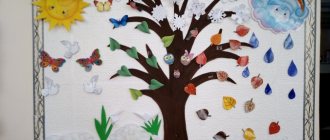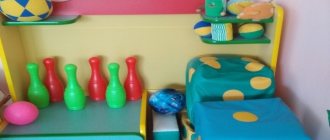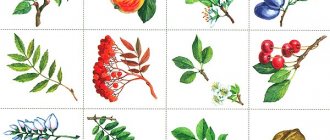What is important to consider when creating a natural corner in a kindergarten?
A living corner in a kindergarten is designed for each age group, taking into account sanitary standards, the age of the pupils and their capabilities.
SANPIN rules for preschool educational institutions 2.4.1.3049-13 clause 6.11. It has been established that placing animals, aquariums and birds in group rooms (dressing room, group room, bedroom, buffet, toilet) is not allowed.
Therefore, the main inhabitants of the corner will be plants: indoor flowers and a mini garden on the windowsill. The mini garden is made up of garlic, onions, oats and other crops grown in boxes in autumn and winter.
Requirements for the selection of plants
- Work in a corner of nature should be accessible to children in terms of time and strength, so plants are selected that are unpretentious in food and care.
- Plants should not be harmful to the health of children.
- Flowers for a corner of nature in a preschool educational institution should be selected from different types for comparison.
- When placing plants, you need to take into account their biological needs.
- The design of a corner of nature in a preschool educational institution must be done in such a way that preschool children can come up, observe, and do some work.
- Plants should have an attractive appearance that can attract and retain the unsteady attention of children.
The best corner of nature
Features of choosing indoor flowers for different groups
A corner of nature in the younger group should contain no more than 4-5 types of unpretentious indoor flowers. These are plants with distinct flowers, leaves and stems that bloom long and beautifully. Primrose, balsam, ficus, and geranium are perfect.
A corner of nature in the middle group should contain 5-6 species of plants. These are flowers with different sizes and shapes of leaves. In particular, agave, asparagus, chlorophytum.
In the corner of nature in the older group, 6 to 7 types of flowers are placed, 2 or 3 copies each. Plants must have different stems (creeping, climbing) and have bulbs or corms. These include ivy, tradescantia, amaryllis.
For the preparatory group, the number of plants is 6-7 species, which differ in the method of reproduction (bulbs, viviparous). For example, saxifrage, bryophyllum, cyperus.
When planning the design of a nature corner in a kindergarten, do not forget to provide a place to store work equipment, these could be:
- spray,
- watering can,
- cloths for wiping leaves,
- stick for loosening the soil,
- cups for seedlings.
In younger groups, the teacher monitors the cleanliness of the corner and instruments. In the senior and preparatory groups, this can be done with children (appoint a person on duty). The work of preschool children in a corner of nature is carried out in accordance with the curriculum.




